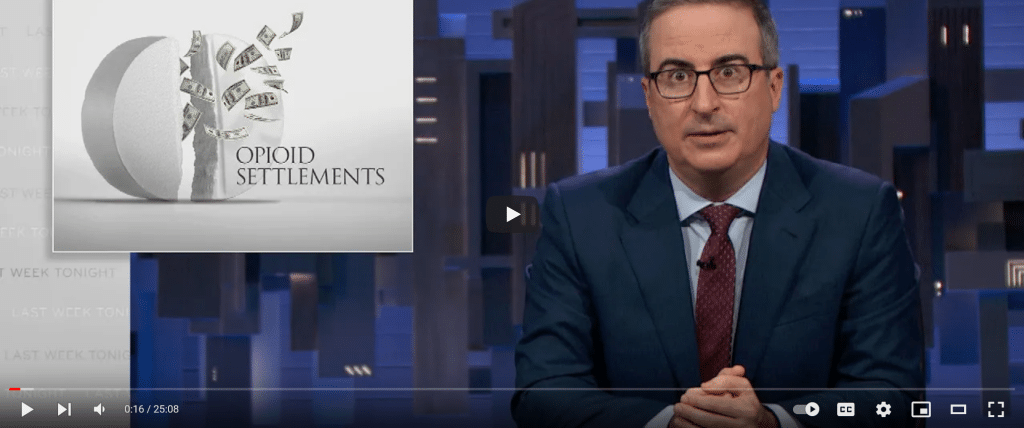Interesting information highlighted in this video from John Oliver:
The opioid epidemic has ravaged communities across America for years, with hundreds of thousands of lives lost and over a trillion dollars in economic damage in 2020 alone. After lengthy litigation, major pharmaceutical companies and drug distributors have finally agreed to pay over $50 billion in settlement funds to state and local governments over the next 18 years.
This massive payout represents an opportunity to take meaningful action to mitigate the devastation caused by the opioid crisis. However, there are already troubling signs that the decision-making process on how to allocate these funds is deeply flawed in many places.
The settlements come with rules stating that 85% of the money must be used for “opioid remediation,” but that term is so broadly defined that it risks becoming a multi-billion dollar slush fund. Even more concerning, only around half of states have committed to publicly reporting how they will spend the money, allowing the potential for zero accountability.
Some state and local governments have already made disappointing choices, like spending chunks of the money on vaguely opioid-related purchases for police departments, such as drug-detecting devices and vehicle fleets. This ignores expert warnings that no opioid settlement funds should go towards law enforcement which has proven ineffective at combating substance abuse.
Other municipalities have fallen victim to aggressive marketing from companies selling overpriced “opioid remediation” products like special drug disposal pouches, wasting money that could have gone towards proven public health solutions.
There are better uses for these funds backed by evidence. The settlement money should expand access to medication-assisted treatment, fund overdose prevention services like testing strips and safe consumption sites, support counseling and peer recovery programs, and connect those struggling with addiction to housing aid.
While $50 billion is far from enough to undo all the damage from the opioid crisis, it’s still a fortune that simply cannot be squandered through lack of expertise or transparency. Fortunately, this process is still in its early stages – but it will require public pressure to ensure the funds go towards real solutions that can save lives in at-risk communities.
Those who have suffered profound loss from the opioid epidemic deserve better than to see this money misspent. Local activists, public health experts and impacted families must make their voices heard loudly to make sure this settlement acts as a substantive step towards remedying the crisis, not just lining government pockets.
Information for this blog post is using the information presented by HBO’s Last Week with John Oliver – and may not be a complete look at all of the data, and may not include information that is specific to your location or any other location specifically. It is normal for entertainment talk shows to cherry pick data for faux-rage, it is believed that most readers will know that, and know that John Oliver does shows in a slanted opinion for emotions style.
Consider this perhaps an eye opening for some statistics and to have a conversation with policy makers to do more and better.



 Casey Wilson
Casey Wilson 
